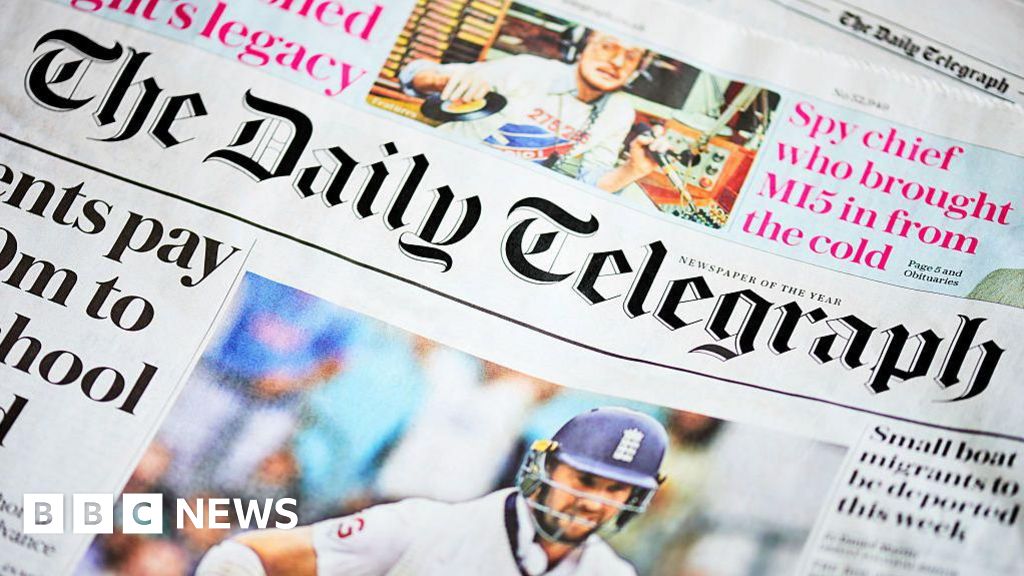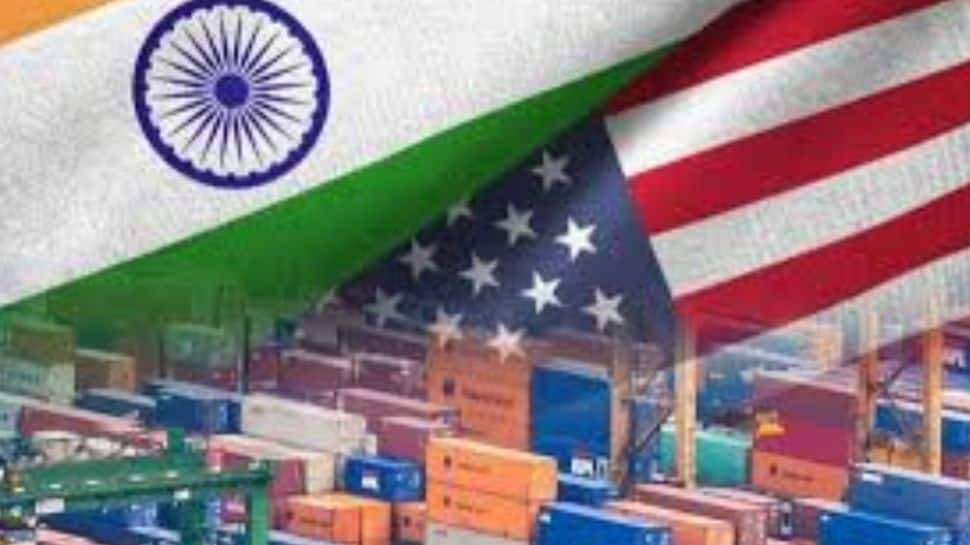Business
‘Swadeshi Campaign’ launch: Govt pushes to boost Indian textiles; domestic market demand expected at $250 billion by 2030 – The Times of India

The ministry of textiles has launched the ‘Swadeshi Campaign’ to boost domestic demand for handloom, handicrafts, and textile products across India. The initiative, which will run for six to nine months, aims to reposition Indian textiles as symbols of pride, style, and heritage, particularly among urban youth and Gen Z consumers. According to the government press release, the campaign’s objectives include stimulating domestic textile consumption, empowering weavers, artisans, and textile MSMEs, and aligning efforts with flagship government initiatives such as the PLI scheme for textiles, PM MITRA Parks, and One District One Product (ODOP). It will also encourage institutional procurement, urging ministries, PSUs, and educational institutions to adopt Indian-made textiles for uniforms and furnishings.
Awareness will be created through events, social media outreach, and partnerships with state governments. The campaign will run under the slogan: “स्वदेशी कपड़ा देश की शान—यही है भारत की पहचान” (Swadeshi fabric is the pride of the nation—this is India’s identity). India’s textile and clothing market, valued at $179 billion in 2024, is expanding at an average annual growth rate of over 7 per cent. Household consumption accounts for 58 per cent of the domestic market and is growing at 8.19 per cent annually, while non-household consumption contributes 21 per cent with 6.79 per cent growth. With the government’s continued initiatives and the Swadeshi Campaign, domestic demand for textiles is projected to grow at a CAGR of 9–10 per cent, reaching $250 billion by 2030.
Business
Daily Mail owner agrees to buy Daily Telegraph for £500m

 Getty Images
Getty ImagesThe publisher of the Daily Mail has agreed to buy the Daily and Sunday Telegraph for £500m.
The Daily Mail and General Trust (DMGT) said it had entered a period of discussion with RedBird IMI, which is a joint venture between the United Arab Emirates and the US private equity firm RedBird Capital Partners.
RedBird Capital’s own bid for control of the Telegraph collapsed last week.
The deal needs to be signed off by Culture Secretary Lisa Nandy. A spokesperson said Nandy would “review any new buyer acquiring the Telegraph in line with the public interest and foreign state influence media mergers regimes”.
DMGT and RedBird IMI have said they expect the deal to be finalised “quickly”.
DMGT chairman Lord Rothermere said he had “long admired the Daily Telegraph” and the deal would give “much-needed certainty and confidence” to its employees.
He said: “The Daily Telegraph is Britain’s largest and best quality broadsheet newspaper and I have grown up respecting it. It has a remarkable history and has played a vital role in shaping Britain’s national debate over many decades.”
He added: “Chris Evans is an excellent editor and we intend to give him the resources to invest in the newsroom. Under our ownership, the Daily Telegraph will become a global brand, just as the Daily Mail has.”
The purchase would see the Telegraph become part of DMGT’s portfolio of media organisations, which includes the i Paper, Metro and New Scientist, along with the Daily and Sunday Mail papers.
The group said the Telegraph would remain editorially independent from DMGT’s other titles.
It also said its case for having the deal approved was “compelling” and would comply with UK regulations, as there would be no foreign state investment or capital in the funding structure.
A spokesman for RedBird IMI said: “DMGT and RedBird IMI have worked swiftly to reach the agreement announced today, which will shortly be submitted to the secretary of state.”
RedBird Capital pulled out of a deal to buy the Telegraph last week.
It had a previous attempt to buy the group rebuffed by politicians as it was majority-funded by Abu Dhabi’s IMI group – which is owned in turn by the Abu Dhabi royal family.
A law change meant that foreign sovereign wealth funds could take a maximum stake of 15% in newspapers or periodicals.
Its more recent bid complied with that rule, but it was understood that the government intended to submit the deal to regulatory review.
Sources close to RedBird insisted that they were confident that the bid would have passed a government review process, but cited negative articles toward the bid from the current Telegraph newsroom as a factor in shelving their interest.
RedBird founder Gerry Cardinale had planned to expand the Telegraph’s reach and subscriber base in the US, believing there to be a gap in the market.
Among other investments, RedBird owns the Italian football team AC Milan.
The Telegraph has been in limbo for over two years, when the RedBird IMI consortium paid off the debts of the Telegraph’s previous owners, the Barclay family, hoping to take eventual ownership of the newspapers.
Business
Pakistan Removes Ban on Gold Import and Export – SUCH TV

The federal government has lifted the ban on the import and export of gold, officials confirmed on Saturday. The Ministry of Commerce issued the order following approval from the federal cabinet.
In addition, the government has introduced some amendments related to the trade of precious metals and jewellery, while maintaining the existing framework for their import and export.
The ban on gold trade was initially imposed on May 6, 2025, after complaints of smuggling surfaced.
The ministry had suspended the SRO regulating gold trade for 60 days. However, no new cases of smuggling have been reported in recent months.
Gold continues to serve as a traditional store of value and remains an important part of Pakistan’s cultural, financial, and manufacturing sectors.
Pakistan predominantly imports gold from the UAE, Switzerland, and other major gold-trading hubs.
Business
Trade outlook: India’s exports hold steady amid Donald Trump tariffs; new markets offset US slowdown – The Times of India

India’s export performance has remained steady even as global markets face volatility, according to SBI Research, which shared its assessment. As per news agency ANI, the report states that merchandise exports between April and September in FY26 touched $220 billion, a 2.9 per cent rise from $214 billion in the same period last year. Exports to the United States also increased by 13 per cent to $45 billion, although shipments in September dipped nearly 12 per cent year-on-year.The US continues to be a key market, but its share in India’s total exports has fallen since July 2025, reaching 15 per cent in September. SBI Research highlights mixed sectoral trends. The US share in India’s marine product exports declined from 20 per cent in FY25 to 15 per cent in September, and its share in precious stones fell sharply from 37 per cent to 6 per cent. However, both marine products and ready-made cotton garments still registered growth during the April–September period.At the same time, as per ANI, India’s export basket has become more geographically diverse. Countries including the UAE, China, Vietnam, Japan, Hong Kong, Bangladesh, Sri Lanka and Nigeria saw higher shares across several product groups. SBI Research suggests that some of this may indicate indirect routing of Indian goods, noting that Australia’s share in US imports of precious stones rose from 2 per cent to 9 per cent, while Hong Kong’s share increased from 1 per cent to 2 per cent.On the trade policy front, India is grappling with higher US tariffs under the Trump administration, which have hit textiles, jewellery and seafood — particularly shrimp. To support exporters, the government has approved Rs 45,060 crore in assistance, including Rs 20,000 crore in credit guarantees.The rupee also faced pressure, slipping to 89.49 against the dollar on Friday amid global financial turbulence. According to ANI, the Reserve Bank of India reiterated that it does not defend any fixed exchange rate, and analysts see the decline as a temporary adjustment.India’s current account deficit narrowed to 0.2 per cent of GDP in Q1 FY26, improving from 0.9 per cent a year earlier, supported by services exports and remittances. SBI Research expects the deficit to widen slightly in the next two quarters before turning positive by fiscal year-end, projecting a full-year deficit of 1.0–1.3 per cent of GDP and a balance-of-payments gap of up to $10 billion.
-

 Tech7 days ago
Tech7 days agoNew carbon capture method uses water and pressure to remove CO₂ from emissions at half current costs
-

 Business1 week ago
Business1 week agoThese 9 Common Money Mistakes Are Eating Your Income
-

 Sports7 days ago
Sports7 days agoTexas A&M officer scolds South Carolina wide receiver after touchdown; department speaks out
-

 Politics1 week ago
Politics1 week agoBritish-Pakistani honoured for transforming UK halal meat industry
-

 Fashion1 week ago
Fashion1 week agoAfter London, Leeds and Newcastle, next stop Glasgow for busy Omnes
-

 Business1 week ago
Business1 week agoWhat’s behind Rachel Reeves’s hokey cokey on income tax rises?
-

 Tech1 week ago
Tech1 week ago$25 Off Exclusive Blue Apron Coupon for November 2025
-

 Sports1 week ago
Sports1 week agoApple scrapping MLS Season Pass service in ’26






